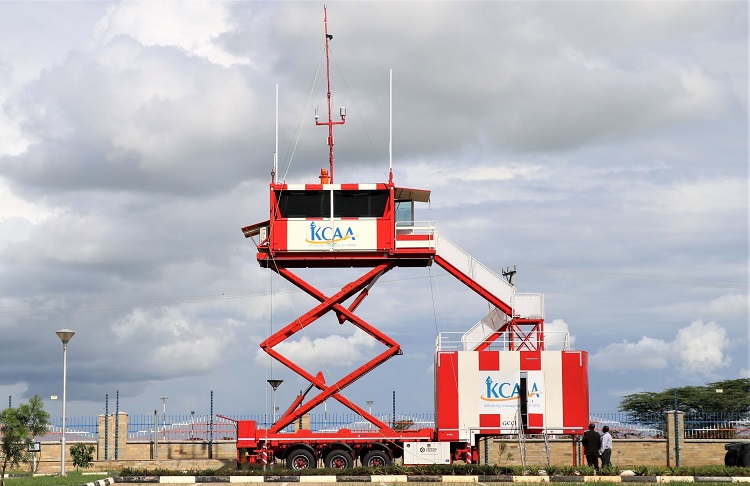The efficiency in response to aeronautical Search and Rescue is set to improve drastically after the Kenya Civil Aviation Authority (KCAA) launched an automated Aeronautical Search and Rescue System at the Aeronautical Rescue Coordination Centre (ARCC).
The setting up of the automated integrated Search and Rescue system at the ARCC at a cost of 31 million shillings will enable the KCAA Air Navigation Service Provider (ANSP) to have continuous coordination, of all Aeronautical Search and Rescue missions within the country.
This automation will help KCAA achieve fast and efficient response in event of a Search and Rescue Mission, thereby increasing the chances of saving lives and property.
The KCAA Director-General, Capt. Gilbert M. Kibe said the new system installed at the ARCC will greatly boost the chances of tracking aircraft in distress and thus saving lives. “The manual search coordination process took longer time in determining the probable area to be searched, hence delaying mobilization of Search and Rescue response agencies. With the right data obtained from the System, the search area can now be narrowed to a specific location after which response agencies are informed and this increases the chances of saving lives and property.”
Initially, the Aeronautical Rescue Coordination Centre (ARCC) was only activated when there was a need for Search and Rescue following a reported emergency. This required mobilization of Search Mission Coordinators who would then proceed to conduct a manual search using maps and charts.
Currently, the ARCC is manned on a 24-hour basis with qualified Search Mission Coordinators, the officers have undergone an on-job-training to familiarise themselves with the new system and standard operating procedures. The new system was put to test by KCAA during the first-ever Search and Rescue drill in East Africa conducted on 3rd December 2019.
The Search and Rescue agencies involved during the drill included government agencies such as the National Police Service-Air wing and National Police Service Operations, Kenya Defence Forces, National Disaster Management Unit, Kenya Meteorological Department, Kenya Airports Authority among others,” added Capt. Kibe.
The newly-installed system is linked to a search and rescue satellite that aids in the tracking of Emergency Locator Transmitter (ELT), enabling faster detection of aircraft in distress.
All aircraft operating in Kenya are required to be fitted with a serviceable ELT which is triggered automatically when the aircraft experiences impact. The new system is able, via satellite, to indicate the location of the aircraft which then, puts into motion the search and rescue operation.
Capt. Kibe further mentioned that the next step to building a more efficient and safer search and rescue coordination in the country is the setting up of a Search and Rescue Organisation (SARO) that will be a multi-agency team of all the stakeholders involved in search and rescue operations.

